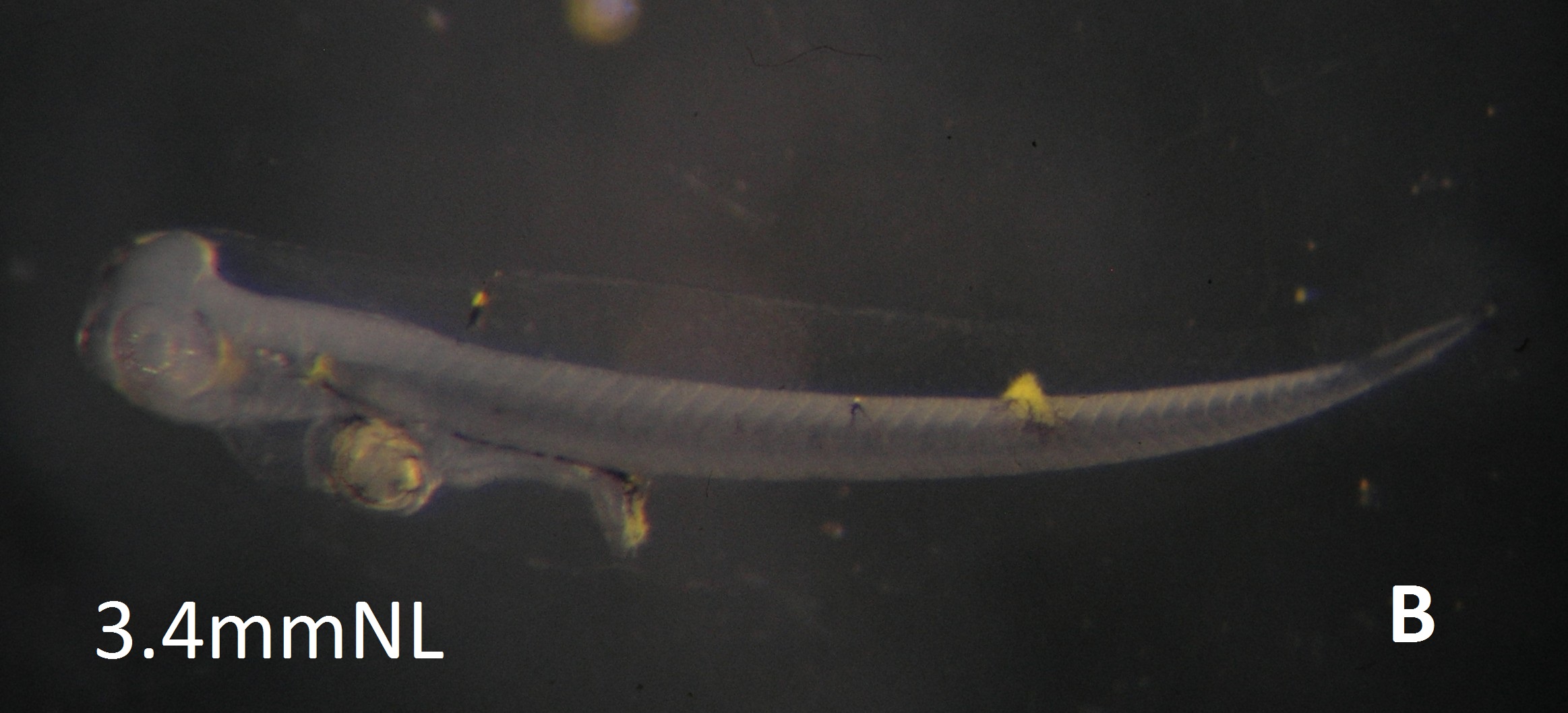Scombridae: L III A11
Katsuwonus pelamis (Linnaeus, 1758).
Skipjack tuna.





|
Egg diameter in µm |
Number of oil globules |
Diameter of oil globule in µm |
Yolk texture |
Perivitelline space |
Position of oil globule at hatch |
Gut length at eye- pigment stage |
Myomeres |
|
985-1060 |
1 |
220-240 |
clear |
narrow |
stern |
35% of NL |
41 |
Egg: The bright amber oil globule, and later development of dark chromatophores on the developing larva within the egg(A, A1) and summer appearance, make this egg easily recognisable, being, usually, only confused with LIIIA4. The yolk surface is finely rough (goose-pimpled). Incubation is about 30 hours.
Larva: The early larva has a characteristic pattern of yellow (B), a high myomere count, and an unusual black piment line in the dorsal finfold (B1), which immediately identifies this species from all but the other two summer spawning scombrids E. affinis (LIIIA11A) and Auxis rochei (LIIIA11). By day 3-4, all yellow pigment had disappeared (C). B: 1 day, C: 3 days (25-26°C).
Seven larvae hatched from this egg, have been barcoded, matching five locally collected adults (BOLD).
 |
 |
| Linked samples | Offshore | Inshore |
| Eggs | 141 | 12 |
| Hits | 16 | 6 |
This egg was rare off Park Rynie, and confined to summer (blue graph). Abundance in samples through the years of the study has been very variable(white graph). The Park Rynie linked samples showed a high percentage offshore (92%), indicating a species spawning on the edge of the shelf, outside the 50m contour. See Section 7.3 and Table 1 of the Introductory Notes, for more information on the linked samples.